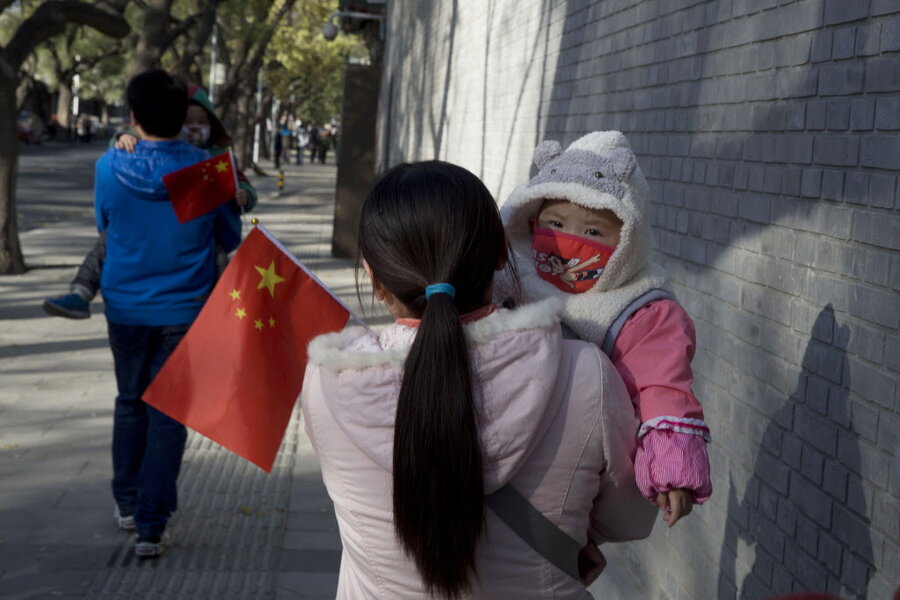Why China is shifting to a 'two-child' policy
Loading...
The era of China's "one-child" policy may finally be over.
Shifting demographics are largely responsible. Although China’s population stands at 1.37 billion today, Chinese officials estimate that it will decline to 1.3 billion by 2050, due to extremely low birth rates, and the census reveals that China faces both an aging population and a declining workforce.
In 2013, China began loosening the one-child policy for citizens who are urban, Han, and from an only-child household. The new, broader two-child policy is part of sweeping reforms that China plans to make over the next five years.
Experts from 21 Chinese think tanks recommended the changes in a report they recently submitted to authorities in Beijing. They said that the mainland's birth rate is 1.18 children for every couple, which is significantly lower than the global average of 2.5 children per couple, or even the 1.7 average in developed countries.
"China has undergone a birth rate below the replacement level of 2.1 for 20 years straight," said demographer Dr. Wang Feng to the South China Morning Post. "Its population will no doubt start to decrease in 10 years, even if the one-child policy is further relaxed immediately."
Not only would the two-child policy provide an immediate bump to China's population, but over time analysts project that it would grow China's shrinking workforce, as the children from the two-child policy eventually grow up and have children of their own.
The new policy may signal the end of the human rights abuses which have occurred under the draconian one-child era. One of the most common effects has been sex-selective abortions that target female fetuses, both in rural families who would prefer a son to support the family and among family-planning officials adhering to traditional notions about gender.
According to projections from the Canadian Medical Association, these abortions have created a 10 to 20 percent excess of men in the next 20 years. The researchers found that 94 percent of unmarried people in China between the ages of 28 and 49 are male.
The study further estimates that even after the two-child policy is enacted, it will take several decades before the ratio between men and women in mainland China settles out.
Still, some people are optimistic that the new policy is a step in the right direction.
"In the past, the government failed to grasp the essence of the issue," said Liang Zhongtang, a demographer from the Shanghai Academy of Social Science, to The Guardian.
"The core issue is not about one child or two children," said Dr. Liang. "It’s about reproductive freedom. It’s about basic human rights."






